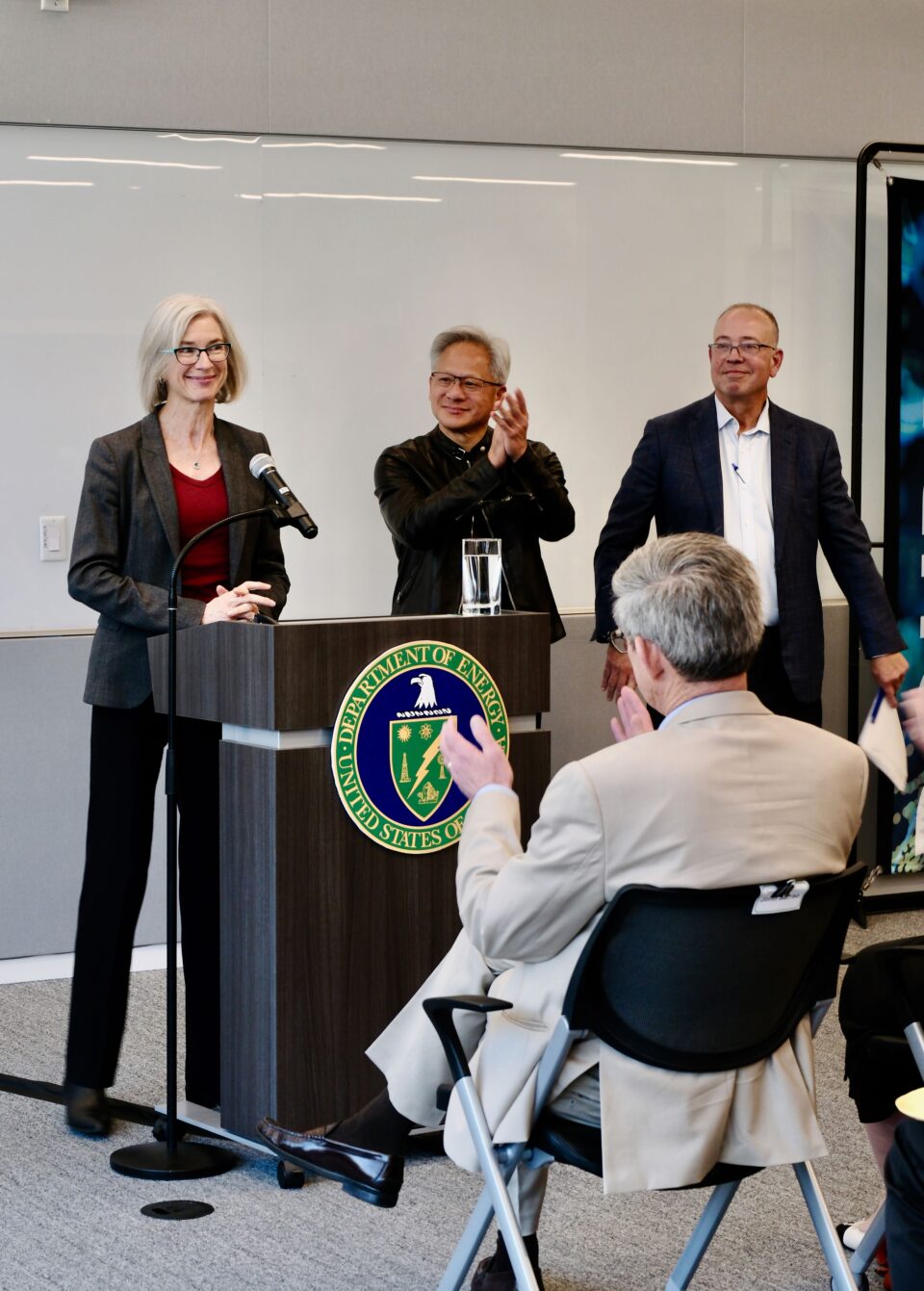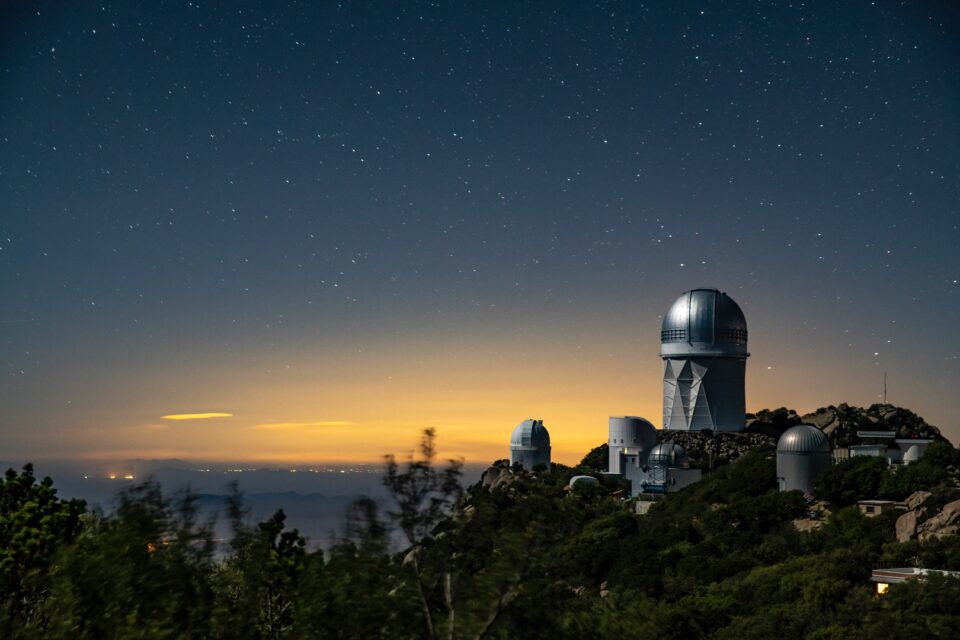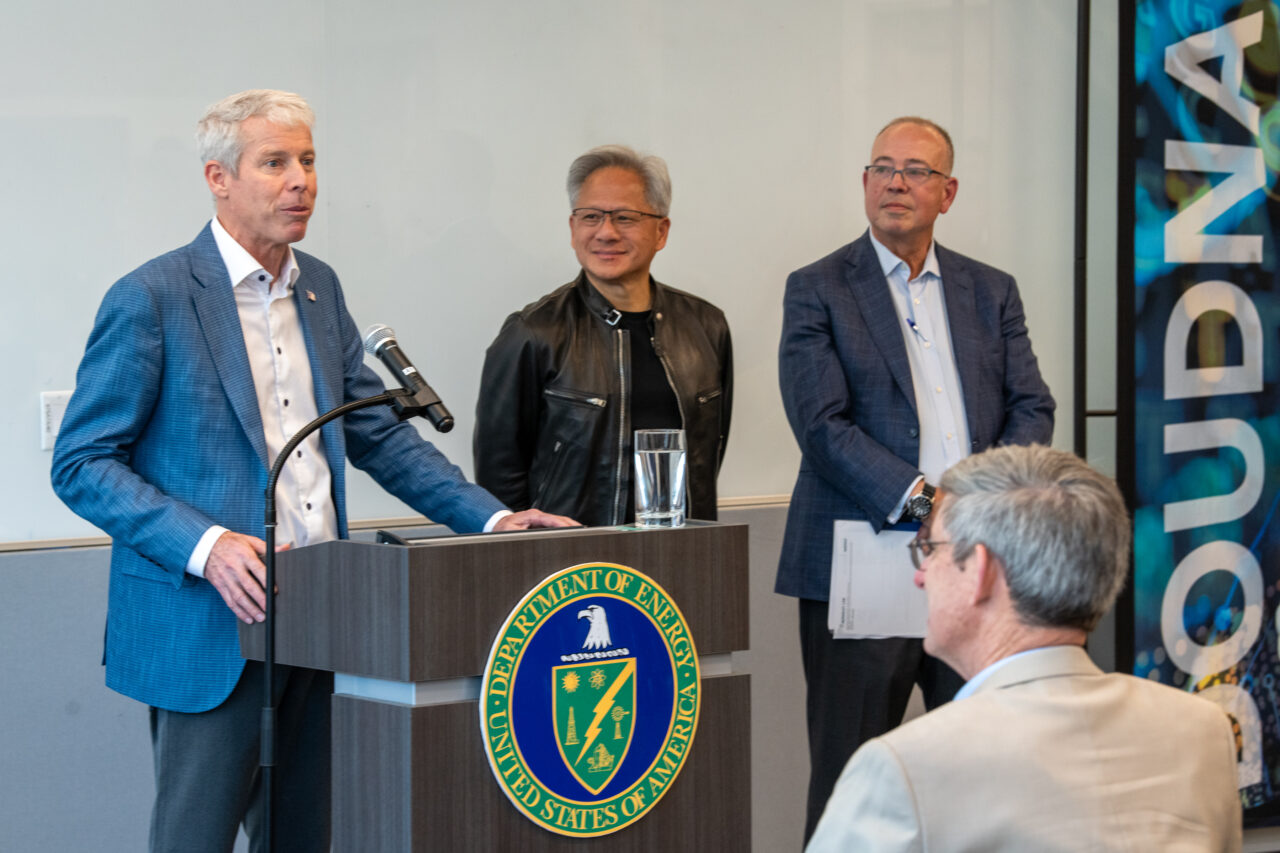Ready for a front-row seat to the next scientific revolution?
That’s the idea behind Doudna — a groundbreaking supercomputer announced today at Lawrence Berkeley National Laboratory in Berkeley, California. The system represents a major national investment in advancing U.S. high-performance computing (HPC) leadership, ensuring U.S. researchers have access to cutting-edge tools to address global challenges.
“It will advance scientific discovery from chemistry to physics to biology and all powered by — unleashing this power — of artificial intelligence,” U.S. Energy Secretary Chris Wright (pictured above) said at today’s event.
Also known as NERSC-10, Doudna is named for Nobel laureate and CRISPR pioneer Jennifer Doudna. The next-generation system announced today is designed not just for speed but for impact.

Powered by Dell Technologies infrastructure with the NVIDIA Vera Rubin architecture, and set to launch in 2026, Doudna is tailored for real-time discovery across the U.S. Department of Energy’s most urgent scientific missions. It’s poised to catapult American researchers to the forefront of critical scientific breakthroughs, fostering innovation and securing the nation’s competitive edge in key technological fields.
“I’m so proud that America continues to invest in this particular area,” said NVIDIA founder and CEO Jensen Huang. “It is the foundation of scientific discovery for our country. It is also the foundation for economic and technology leadership.”
“It’s an incredible honor to be here,” Doudna said, adding she was “surprised and delighted” that a supercomputer would be named after her. “I think we’re standing at a really interesting moment in biology,” she added, with people with different skills coming together to address global issues.
Designed to Accelerate Breakthroughs
Unlike traditional systems that operate in silos, Doudna merges simulation, data and AI into a single seamless platform.
“The Doudna supercomputer is designed to accelerate a broad set of scientific workflows,” said NERSC Director Sudip Dosanjh. “Doudna will be connected to DOE experimental and observational facilities through the Energy Sciences Network (ESnet), allowing scientists to stream data seamlessly into the system from all parts of the country and to analyze it in near real time.”
It’s engineered to empower over 11,000 researchers with almost instantaneous responsiveness and integrated workflows, helping scientists explore bigger questions and reach answers faster than ever.
“We’re not just building a faster computer,” said Nick Wright, advanced technologies group lead and Doudna chief architect at NERSC. “We’re building a system that helps researchers think bigger and discover sooner.”
Here’s what Wright expects Doudna to advance:
- Fusion energy: Breakthroughs in simulation that unlocks clean fusion energy.
- Materials science: AI models that design new classes of superconducting materials.
- Drug discovery acceleration: Ultrarapid workflow that helps biologists fold proteins fast enough to outpace a pandemic.
- Astronomy: Real-time processing of data from the Dark Energy Spectroscopic Instrument at Kitt Peak to help scientists map the universe.
Doudna is expected to outperform its predecessor, Perlmutter, by more than 10x in scientific output, all while using just 2-3x the power.
This translates to a 3-5x increase in performance per watt, a result of innovations in chip design, dynamic load balancing and system-level efficiencies.
AI-Powered Discovery at Scale
Doudna will power AI-driven breakthroughs across high-impact scientific fields nationwide. Highlights include:
- AI for protein design: David Baker, a 2024 Nobel laureate, used NERSC systems to support his work using AI to predict novel protein structures, addressing challenges across scientific disciplines.
- AI for fundamental physics: Researchers like Benjamin Nachman are using AI to “unfold” detector distortions in particle physics data and analyze proton data from electron-proton colliders.
- AI for materials science: A collaboration including Berkeley Lab and Meta created “Open Molecules 2025,” a massive dataset for using AI to accurately model complex molecular chemical reactions. Researchers involved also use NERSC for their AI models.
Real-Time Science, Real-World Impact
Doudna isn’t a standalone system. It’s an integral part of scientific workflows. DOE’s ESnet will stream data from telescopes, detectors and genome sequencers directly into the machine with low-latency, high-throughput NVIDIA Quantum-X800 InfiniBand networking.
This critical data flow is prioritized by intelligent quality-of-service mechanisms, ensuring it stays fast and uninterrupted, from input to insight.
This will make the system incredibly responsive. At the DIII-D national fusion ignition facility, for example, data will stream control-room events directly into Doudna for rapid-response plasma modeling, so scientists can make adjustments in real time.
“We used to think of the supercomputer as a passive participant in the corner,” Wright said. “Now it’s part of the entire workflow, connected to experiments, telescopes, detectors.”
The Platform for What’s Next: Unlocking Quantum and HPC Workflows
Doudna supports traditional HPC, cutting-edge AI, real-time streaming and even quantum workflows.

This includes support for scalable quantum algorithm development and the codesign of future integrated quantum-HPC systems, using platforms like NVIDIA CUDA-Q.
All of these workflows will run on the next-generation NVIDIA Vera Rubin platform, which will blend high-performance CPUs with coherent GPUs, meaning all processors can access and share data directly to support the most demanding scientific workloads.
To scale out, the system will use NVIDIA Quantum-X800 InfiniBand with 9x increased in-Network Computing performance so that the most challenging workloads can access even more compute and memory beyond the limits of an NVLink domain.
Researchers are already porting full pipelines using frameworks like PyTorch, the NVIDIA Holoscan software development kit, TensorFlow, NVIDIA cuDNN and NVIDIA CUDA-Q, all optimized for the system’s Rubin GPUs and NVIDIA NVLink architecture.
Over 20 research teams are already porting full workflows to Doudna through the NERSC Science Acceleration Program, tackling everything from climate models to particle physics. This isn’t just about raw compute, it’s about discovery, integrated from idea to insight.
Designed for Urgency
Last year, AI-assisted science earned two Nobel Prizes. From climate research to pandemic response, the next breakthroughs won’t wait for better infrastructure.
With deployment slated for 2026, Doudna is positioned to lead a new era of accelerated science. DOE facilities across the country, from Fermilab to the Joint Genome Institute, will rely on its capabilities to turn today’s questions into tomorrow’s breakthroughs.
“This isn’t a system for one field,” Wright said. “It’s for discovery — across chemistry, physics and fields we haven’t imagined yet.”
As Huang put it, Doudna is “a time machine for science.” It compresses years of discovery into days and gives the world’s toughest problems the power they’ve been waiting for.
This post has been updated with comments from Thursday’s event at Lawrence Berkeley National Laboratory.
